New NASA chief scientist to focus on climate changeby Jeff Foust — January 12, 2022 [SN]
 Katherine Calvin, who conducted climate change research before joining NASA, will serve as both the agency’s chief scientist and its senior climate adviser. Credit: NASA/Bill Ingalls
Katherine Calvin, who conducted climate change research before joining NASA, will serve as both the agency’s chief scientist and its senior climate adviser. Credit: NASA/Bill IngallsORLANDO, Fla. — NASA has hired a climate scientist as its new chief scientist, a move that reflects the greater emphasis the agency is placing on climate change studies.
NASA announced Jan. 10 that it selected Katherine Calvin as both its new chief scientist and its senior climate adviser. Calvin had been an earth scientist at the Pacific Northwest National Laboratory’s Joint Global Change Research Institute, developing models for exploring interactions between human and Earth systems.
https://spacenews.com/new-nasa-chief-scientist-to-focus-on-climate-change/Space Norway plots recovery mission for failed subsea cableby Jason Rainbow — January 13, 2022 [SN]
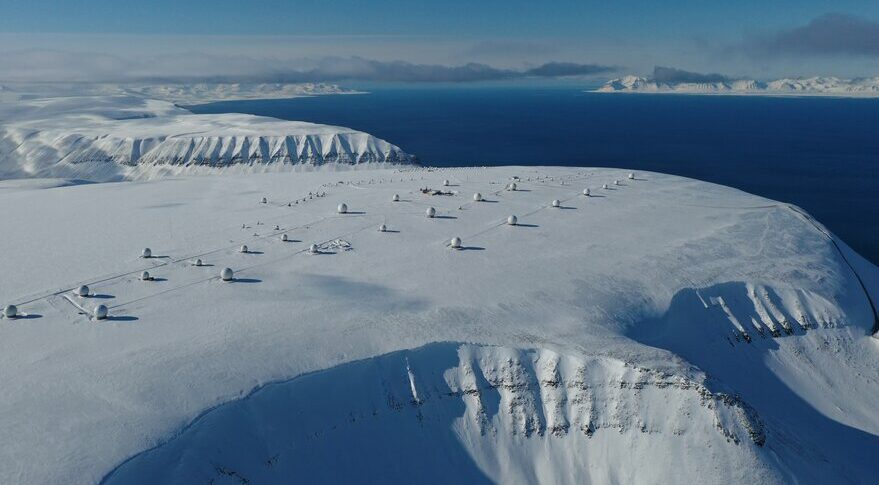 KSAT's global ground station network includes around 100 antennas in Svalbard, Norway. Credit: KSAT
KSAT's global ground station network includes around 100 antennas in Svalbard, Norway. Credit: KSATTAMPA, Fla. — Space Norway said Jan. 13 it expects to start repairing next month one of two undersea fiber-optic cables it operates between its Svalbard satellite station and mainland Norway, after a failure left the Arctic region without a backup connection.
Investigations are continuing into the extent and cause of the damage that occurred Jan. 7, said Space Norway’s head of infrastructure Dag Stølan.
https://spacenews.com/space-norway-plots-recovery-mission-for-failed-subsea-cable/NASA drops plans to fly Earth science instrument as commercial hosted payloadby Jeff Foust — February 16, 2022 [SN]
 NASA originally intended to host GeoCarb on a commercial communications satellite in GEO, but changed course after finding a lack of potential hosts for the Earth science instrument. Credit: Lockheed Martin, University of Oklahoma
NASA originally intended to host GeoCarb on a commercial communications satellite in GEO, but changed course after finding a lack of potential hosts for the Earth science instrument. Credit: Lockheed Martin, University of OklahomaWASHINGTON — An Earth science instrument selected by NASA several years ago to fly as a hosted payload on a commercial communications satellite may instead fly on a standalone spacecraft because of a lack of hosting opportunities.
NASA issued a solicitation Feb. 9 seeking information for what it called the GeoCarb Access to Space project. NASA is looking for information on prospective providers of spacecraft that could host the GeoCarb instrument for a launch that NASA would provide by the end of 2024.
https://spacenews.com/nasa-drops-plans-to-fly-earth-science-instrument-as-commercial-hosted-payload/NOAA seeks continuity of space weather observationsby Debra Werner — January 24, 2022 [SN]
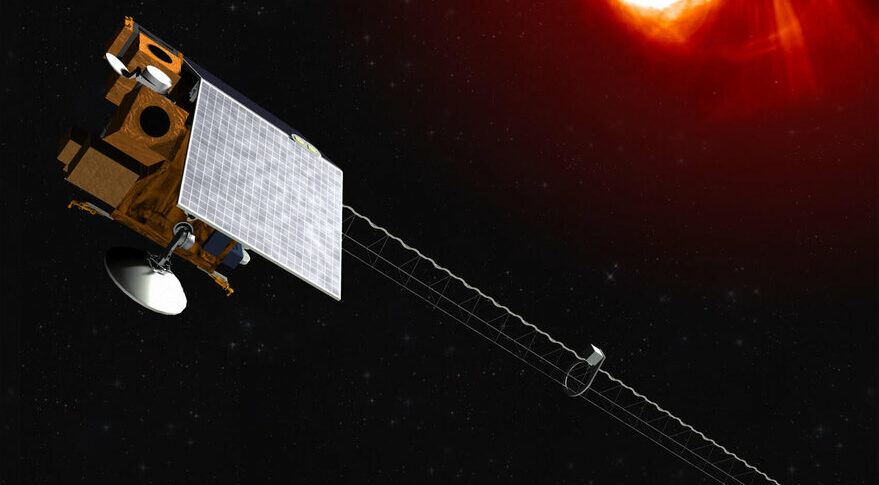 The National Oceanic and Atmospheric Administration plans to launch the Space Weather Follow On satellite to Earth-Sun Lagrange Point 1 in 2025 on the NASA Interstellar Mapping and Acceleration Probe. This is an artist's rendering of the spacecraft. Credit: NOAA
The National Oceanic and Atmospheric Administration plans to launch the Space Weather Follow On satellite to Earth-Sun Lagrange Point 1 in 2025 on the NASA Interstellar Mapping and Acceleration Probe. This is an artist's rendering of the spacecraft. Credit: NOAASAN FRANCISCO — The National Oceanic and Atmospheric Administration is looking ahead to a future generation of space weather instruments.
The agency’s first priority is ensuring the continuity of measurements to be made by the Space Weather Follow-On (SWFO) mission sensor suite scheduled to travel to Lagrange Point 1 in 2025 on NASA’s Interstellar Mapping and Acceleration probe.
https://spacenews.com/beyond-space-weather-follow-on/NOAA to move new weather satellite quickly into positionby Debra Werner — January 25, 2022 [SN]
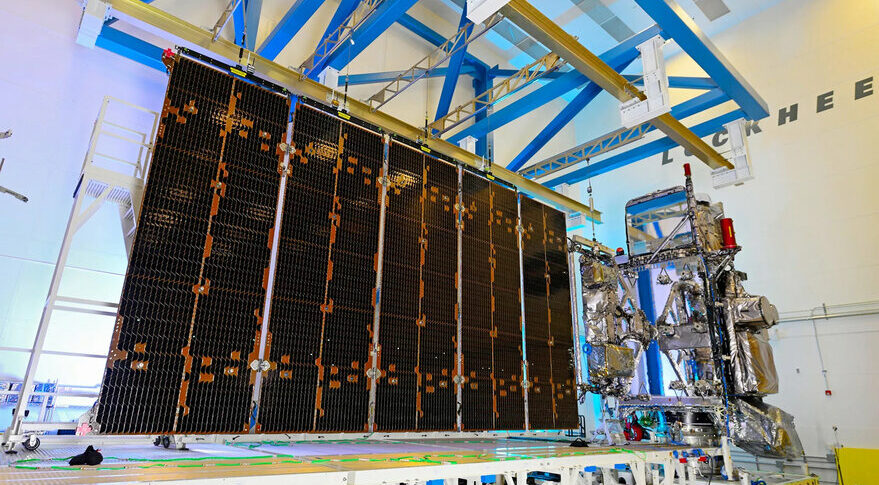 The National Oceanic and Atmospheric Administration's GOES-T satellite in a clean room at Lockheed Martin. Credit: Lockheed Martin
The National Oceanic and Atmospheric Administration's GOES-T satellite in a clean room at Lockheed Martin. Credit: Lockheed MartinSAN FRANCISCO – The National Oceanic and Atmospheric Administration will move its next Geostationary Operational Environmental Satellite (GOES) weather satellite into position over the Western United States soon after launch to speed up data delivery to the National Weather Service.
The GOES-T satellite, scheduled to launch March 1 on a United Launch Alliance Atlas Centaur rocket from Cape Canaveral Space Force Station, will be renamed GOES-18 after launch.
https://spacenews.com/noaa-goes-t-to-move-quickly/https://www.forum.kosmonauta.net/index.php?topic=4828.msg175017#msg175017NASA hosted payloads waiting for rides to orbitby Debra Werner — January 25, 2022 [SN]
 Artist’s illustration of NASA’s GeoCarb mission, which will map concentrations of key carbon gases above the Americas from geostationary orbit. (Credit: Lockheed Martin, University of Oklahoma)
Artist’s illustration of NASA’s GeoCarb mission, which will map concentrations of key carbon gases above the Americas from geostationary orbit. (Credit: Lockheed Martin, University of Oklahoma)SAN FRANCISCO – NASA continues to face difficulties in sending some of its payloads to orbit as hosted payloads on commercial satellites.
The space agency is looking for a geostationary commercial satellite to house the Geostationary Carbon Cycle Observatory or GeoCARB, an instrument to measure carbon dioxide, carbon monoxide and methane over North and South America.
https://spacenews.com/nasa-needs-payload-hosts/NASA to continue buying Earth-observation datasetsby Debra Werner — January 28, 2022 [SN]
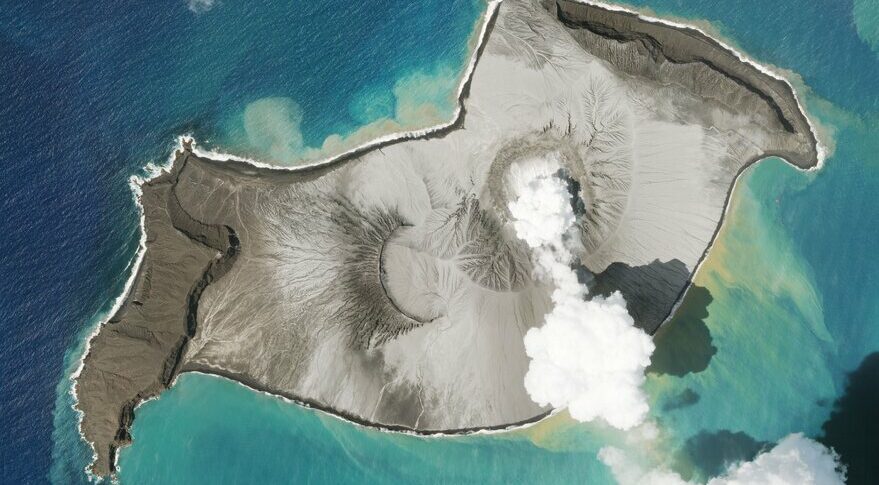 Planet Skysat image shows clouds of steam rising from the Hunga-Tonga Hunga-Ha’apai volcano as heat vaporizes a small crater lake on Janaury 7, 2021. NASA researchers are using this data to monitor activity on volcanic islands. Credit: Planet
Planet Skysat image shows clouds of steam rising from the Hunga-Tonga Hunga-Ha’apai volcano as heat vaporizes a small crater lake on Janaury 7, 2021. NASA researchers are using this data to monitor activity on volcanic islands. Credit: PlanetSAN FRANCISCO — NASA intends to continue buying data gathered by commercial Earth-observation satellites.
“The Commercial SmallSat Data Acquisition program is now a sustainable program,” Kevin Murphy, NASA Earth Science Division chief science data officer, said Jan. 27 at the American Meteorological Society annual meeting. “These commercial capabilities offer some cost-effective means to advance and extend our research and applications in conjunction with the data that we collect from NASA, our international partners and our other U.S. government agencies.”
https://spacenews.com/nasa-continues-csda-program/GOES-T launch preparations underwayby Jeff Foust — February 2, 2022 [SN]
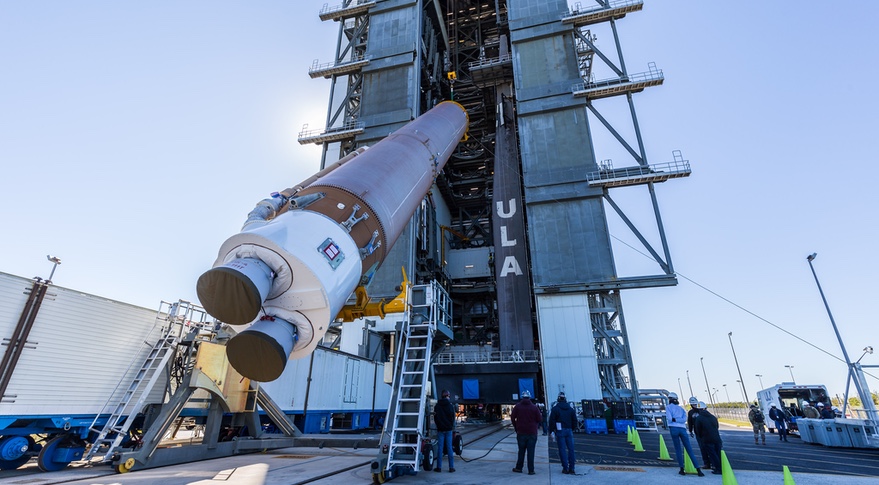 The first stage of the Atlas 5 that will launch the GOES-T weather satellite arrives at ULA's Vertical Integration Facility at Space Launch Complex 41. Credit: ULA
The first stage of the Atlas 5 that will launch the GOES-T weather satellite arrives at ULA's Vertical Integration Facility at Space Launch Complex 41. Credit: ULAWASHINGTON — Preparations are underway for the launch of the next in a series of geostationary weather satellites that will also mark the end of a decades-long streak for one company.
At a briefing organized by the National Oceanic and Atmospheric Administration Feb. 1, representatives of several agencies and companies said they were on track for a March 1 launch of the GOES-T weather satellite on an Atlas 5 from Cape Canaveral, Florida. The spacecraft, the third of four in the GOES-R series, will replace GOES-17 at the GOES-West orbital location in geostationary orbit at 137 degrees west.
https://spacenews.com/goes-t-launch-preparations-underway/Orbital Sidekick notes growing demand for hyperspectral databy Debra Werner — February 24, 2022 [SN]
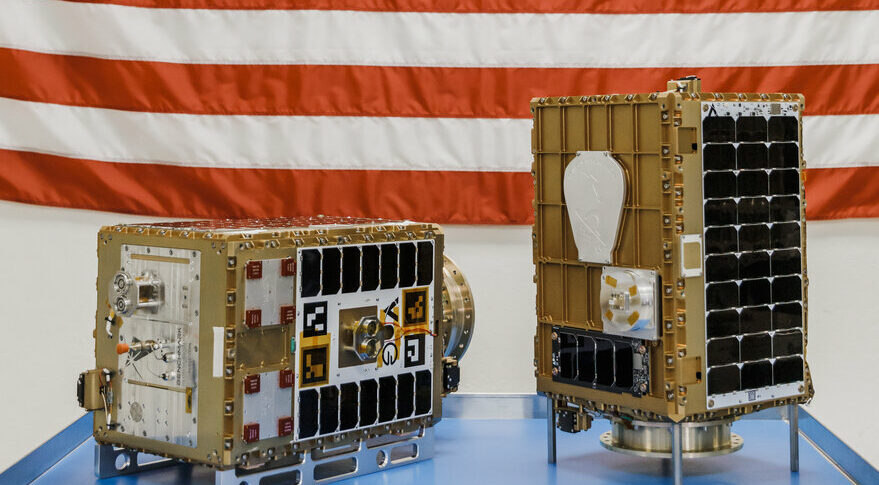 Orbital Sidekick's 30-kilogram Aurora satellite launched in June was a precursor to the six 100-kilogram ESPA class GHOSt satellites scheduled for launch in 2022. Credit: Orbital Sidekick
Orbital Sidekick's 30-kilogram Aurora satellite launched in June was a precursor to the six 100-kilogram ESPA class GHOSt satellites scheduled for launch in 2022. Credit: Orbital SidekickSAN FRANCISCO – Capacity is the biggest constraint for Orbital Sidekick, the hyperspectral imaging startup that is acquiring data from Aurora, its first satellite launched in June.
“There’s huge demand for dual-use satellite technology,” Daniel Katz, Orbital Sidekick CEO and co-founder told SpaceNews. “We are working to ramp up production and get hyperspectral data into the hands of customers.”
San Francisco-based Orbital Sidekick is pleased with the performance of the Aurora sensor, which achieved its goal of outperforming NASA Hyperion hyperspectral sensor, Katz said. Hyperion is on the space agency’s Earth Observation-1 satellite launched in 2000.
https://spacenews.com/orbital-sidekick-aurora-in-q-tel/GOES-T nears launch as NASA plans studies of next-generation weather satelliteby Jeff Foust — February 28, 2022 [SN]
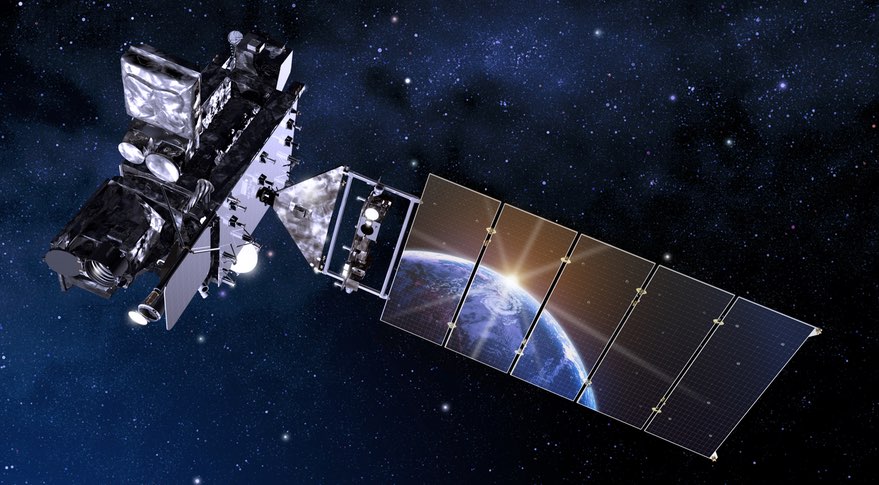 GOES-T is the third of four satellites in the GOES-R series of geostationary weather satellites. NASA is seeking proposals for definition studies of the next generation of such satellites. Credit: Lockheed Martin
GOES-T is the third of four satellites in the GOES-R series of geostationary weather satellites. NASA is seeking proposals for definition studies of the next generation of such satellites. Credit: Lockheed MartinWASHINGTON — The latest in a series of geostationary weather satellites is ready for launch as NASA takes the next step in plans for a next generation of such spacecraft.
The Geostationary Operational Environmental Satellite (GOES) T satellite is scheduled to launch at 4:38 p.m. Eastern March 1 on a United Launch Alliance Atlas 5 from Cape Canaveral Space Force Station in Florida. At a Feb. 26 briefing, mission officials said the spacecraft and rocket were ready for launch, with the main concern the weather: forecasts projected a 60% chance of acceptable conditions March 1, rising to 70% if the launch is delayed a day.
https://spacenews.com/goes-t-nears-launch-as-nasa-plans-studies-of-next-generation-weather-satellite/Omnibus bill cuts funding for future weather satellitesby Jeff Foust — March 10, 2022 [SN]
 While the omnibus spending bill fully funds continued work on the GOES-R series of weather satellites (above), it sharply cuts NOAA's request for funding on the next generation of such satellites, called GeoXO. Credit: Lockheed Martin
While the omnibus spending bill fully funds continued work on the GOES-R series of weather satellites (above), it sharply cuts NOAA's request for funding on the next generation of such satellites, called GeoXO. Credit: Lockheed MartinWASHINGTON — Appropriators cut funding for a new generation of weather satellites while increasing funding for the Office of Space Commerce for fiscal year 2022.
The omnibus spending bill for fiscal year 2022, passed by the House late March 9 and scheduled to be taken up by the Senate in the next few days, trimmed spending for development of National Oceanic and Atmospheric Administration weather satellites, from the requested level of $1.68 billion to $1.29 billion.
https://spacenews.com/omnibus-bill-cuts-funding-for-future-weather-satellites/Eyes on the Arctic: Satellites reveal changing conditions at northern latitudesby Debra Werner — May 11, 2022 [SN]
 Credit: ISTOCK
Credit: ISTOCKWhen Iceye co-founders Rafal Modrzewski and Pekka Laurila began looking for promising markets for synthetic aperture radar (SAR) data, they focused exclusively on the Arctic.
It was a natural fit for the Finland-based SAR constellation operator founded in 2014. Eight years later, the Arctic remains a key market for Iceye due in part to its lack of terrestrial infrastructure.
https://spacenews.com/eyes-on-the-arctic-satellites-reveal-changing-conditions-at-northern-latitudes/NOAA seeks input on new satellite sensors and digital twinby Debra Werner — May 5, 2022 [SN]
 The European Space Agency demonstrated the ability to observe global winds with a Doppler wind lidar on Aeolus, a satellite built by Airbus Defence and Space and launched in 2018. Credit: European Space Agency
The European Space Agency demonstrated the ability to observe global winds with a Doppler wind lidar on Aeolus, a satellite built by Airbus Defence and Space and launched in 2018. Credit: European Space AgencySAN FRANCISCO – The National Oceanic and Atmospheric Administration is holding a series of meetings next week with potential government, academic and industry partners to discuss the agency’s plan to evaluate emerging satellite and ground architecture technologies.
NOAA released three Broad Agency Announcements April 29. Two of the BAAs focus on satellite sensors: one to measure atmospheric winds in three dimensions and a second for hyperspectral microwave remote sensing observations. In addition, NOAA is seeking information on a digital twin system for Earth observations using artificial intelligence.
https://spacenews.com/noaa-baas-emerging-technologies/Tomorrow.io on track for 2024 weather constellationby Debra Werner — May 5, 2022 [SN]
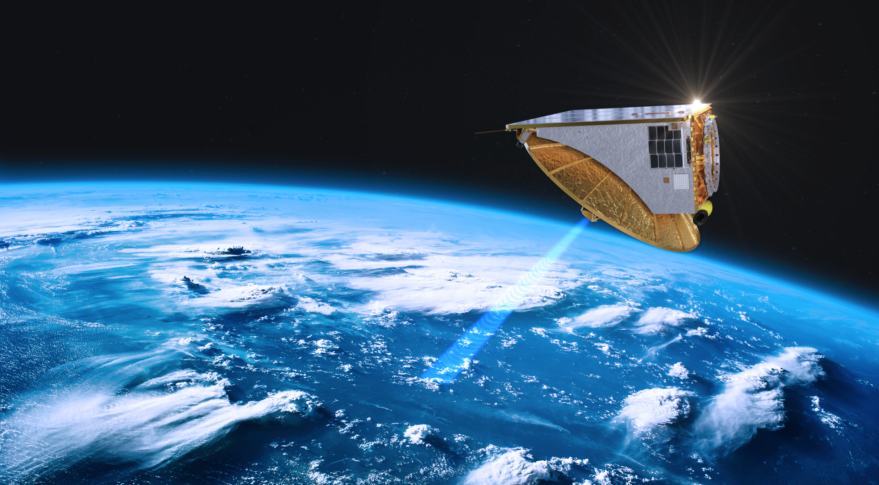 Tomorrow.io plans to monitor global weather with dozens of mini-fridge-size satellites. Credit: Tomorrow.io
Tomorrow.io plans to monitor global weather with dozens of mini-fridge-size satellites. Credit: Tomorrow.ioSAN FRANCISCO — Adding microwave sounders to its constellation will not push back the timeline for startup Tomorrow.io to begin gathering weather data via satellite.
By the end of 2024, the Boston-based startup plans to have a constellation in orbit acquiring radar and microwave observations.
Tomorrow.io announced plans in March to add microwave sensors to its radar satellite constellation because “it will make everything better,” Rei Goffer, Tomorrow.io co-founder and chief strategy officer, told SpaceNews. “A combo constellation is better because those instruments are very complementary to one another.”
https://spacenews.com/tomorrow-io-adds-microwave-sounders/Satellites key to Canada’s Arctic surveillance strategyby David Pugliese — May 17, 2022 [SN]
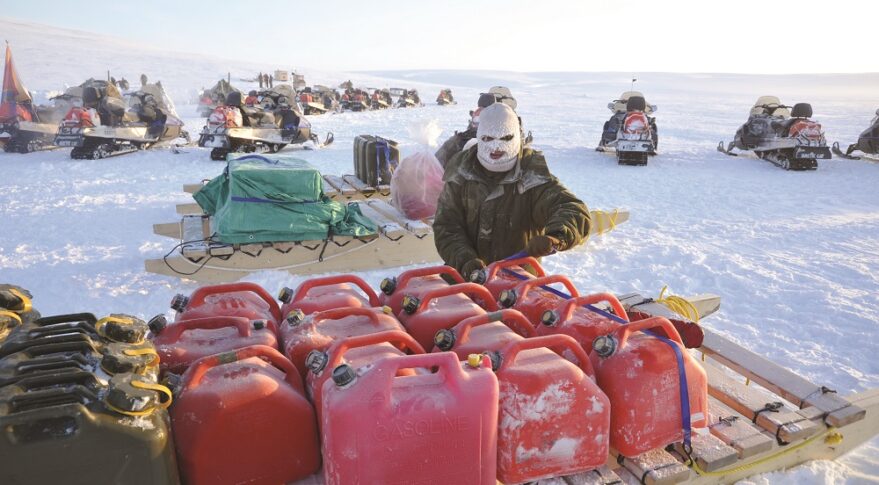 One of the key Canadian military programs for Arctic defense is the Enhanced Satellite Communications Project – Polar. That will involve a satellite or satellites to provide reliable and secure communications access for Canadian military personnel (shown here) and communities in the Arctic. Credit: David Pugliese
One of the key Canadian military programs for Arctic defense is the Enhanced Satellite Communications Project – Polar. That will involve a satellite or satellites to provide reliable and secure communications access for Canadian military personnel (shown here) and communities in the Arctic. Credit: David PuglieseThe Canadian government is bolstering its defense and surveillance capabilities in the Arctic with a focus on using space assets and new technology.
Canadian Defence Minister Anita Anand said the 2022 federal government budget, released April 7, contains 252 million Canadian dollars ($199 million) to start research on modernizing the joint Canada-U.S. North Warning system in the Arctic. In addition, that money will be used for research into long-range communications and over-the-horizon radar systems for the northern region.
https://spacenews.com/satellites-key-to-canadas-arctic-surveillance-strategy/Proposed constellations would enhance Arctic weather observationsby Debra Werner — May 18, 2022 [SN]
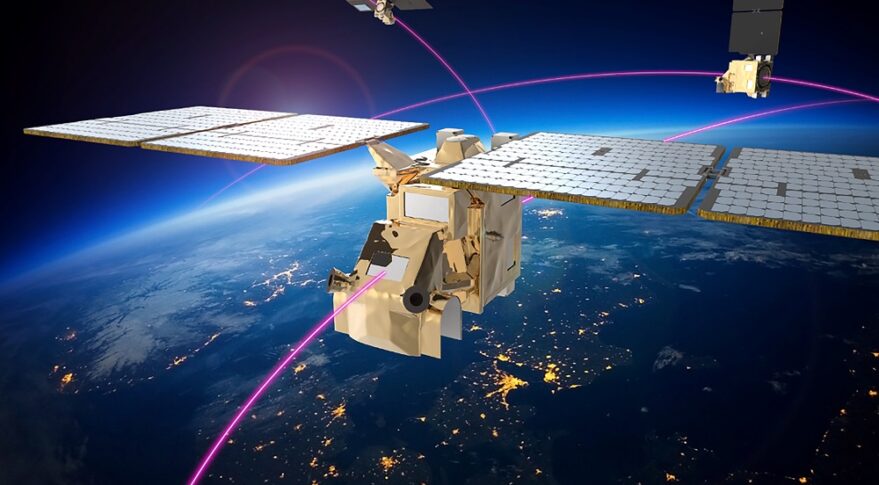 Arctic weather satellite constellation proposed by the European Space Agency. Credit: OHB Sweden
Arctic weather satellite constellation proposed by the European Space Agency. Credit: OHB SwedenWith Arctic aviation and maritime activity on the rise, Europe and Canada are taking the lead in developing weather satellites to gather global data and improve observation of the Earth’s northernmost latitudes.
A consortium led by OHB Sweden AB is developing a prototype for the European Space Agency’s Arctic Weather Satellite, a proposed constellation of 16 small satellites in polar orbit to gather weather data, under a 32.5 million euro ($34.8 million) European Space Agency contract awarded last year.
https://spacenews.com/proposed-constellations-would-enhance-arctic-weather-observations/Ball and Raytheon win weather instrument study contractsby Debra Werner — May 18, 2022 [SN]
 The National Oceanic and Atmospheric Administration plans to launch the Space Weather Follow On satellite to Earth-Sun Lagrange Point 1 in 2025 on the NASA Interstellar Mapping and Acceleration Probe. This is an artist's rendering of the spacecraft. Credit: Ball Aerospace & Technologies
The National Oceanic and Atmospheric Administration plans to launch the Space Weather Follow On satellite to Earth-Sun Lagrange Point 1 in 2025 on the NASA Interstellar Mapping and Acceleration Probe. This is an artist's rendering of the spacecraft. Credit: Ball Aerospace & TechnologiesSAN FRANCISCO — Ball Aerospace & Technologies Corp. and Raytheon Intelligence & Space will begin developing technologies for the National Oceanic and Atmospheric Administration’s next generation of geostationary weather satellites under contracts announced May 17.
Under the firm-fixed-price contracts awarded by NASA, NOAA’s partner for the acquisition, each company will receive approximately $5 million to perform a definition-phase study of the Atmospheric Composition instrument for the Geostationary Extended Observations program, called GeoXO.
https://spacenews.com/ball-and-raytheon-weather-instruments/Fighting Fires via Satelliteby Robert Bell — May 24, 2022 Sponsored Post [SN]
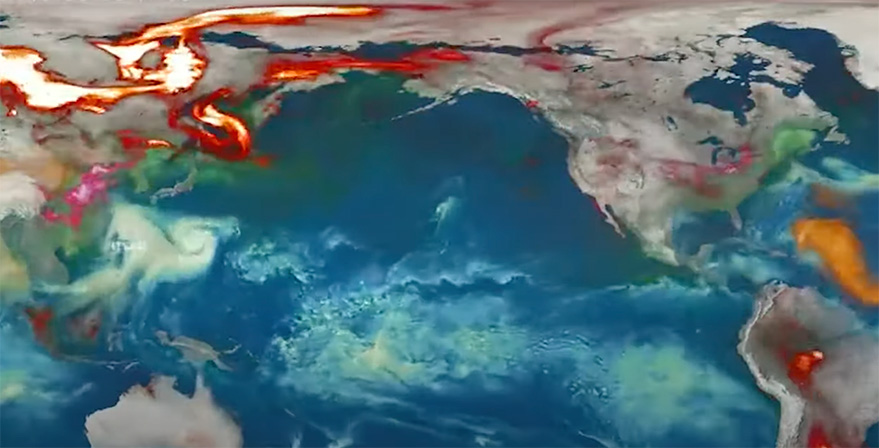 Credit: NASA Goddard’s Scientific Visualization Studio
Credit: NASA Goddard’s Scientific Visualization StudioA forest fire is a massive wall of heat and flame. Driven by high winds, it can leap across roads, spin into columns of fire, turn homes to ash.
But every year, around the world, men and women walk into the fire to save the forest, the homes, the people. They are wildfire fighters, and they do one of the world’s hardest jobs.
https://spacenews.com/fighting-fires-via-satellite/UK’s Open Cosmos gets ESA funding for space weather constellationby Jason Rainbow — May 27, 2022 [SN]
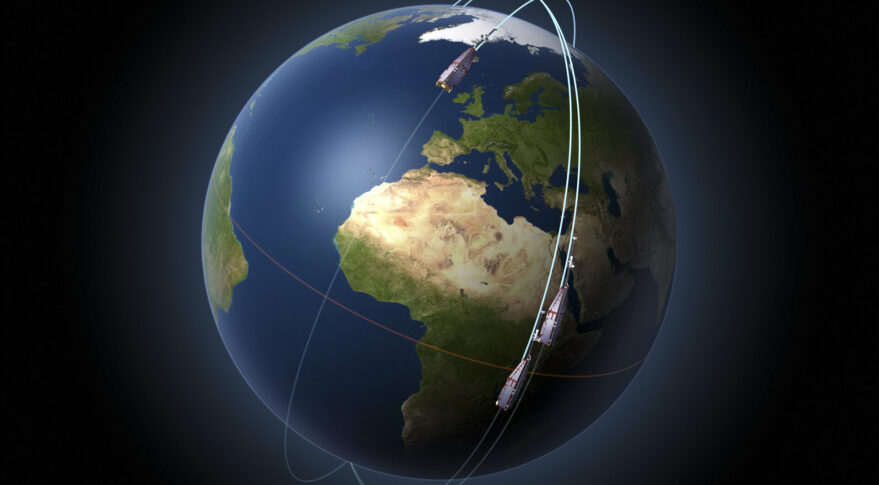 An artist's view of Swarm satellites that have been monitoring Earth’s magnetic field and ionosphere since 2013. Credit: ESA
An artist's view of Swarm satellites that have been monitoring Earth’s magnetic field and ionosphere since 2013. Credit: ESATAMPA, Fla. — British small satellite startup Open Cosmos said May 27 it has secured European Space Agency funding to develop plans for a space weather monitoring constellation.
ESA awarded a 5.2 million euro ($5.6 million) contract to Open Cosmos, which is the technical lead for a European consortium comprising engineering, research and academic organizations for the proposed three-satellite NanoMagSat network.
https://spacenews.com/uks-open-cosmos-gets-esa-funding-for-space-weather-constellation/Ball and Raytheon to develop NOAA ocean sensorsby Debra Werner — May 27, 2022 [SN]
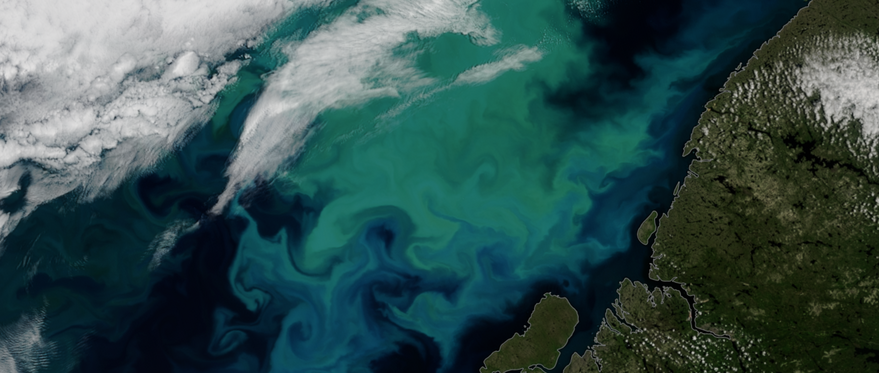 The National Oceanic and Atmospheric Administration Center for Satellite Applications and Research captured this image of an algae bloom in the Barents Sea on July 15, 2021 with the NOAA-20 satellite. Credit: NOAA
The National Oceanic and Atmospheric Administration Center for Satellite Applications and Research captured this image of an algae bloom in the Barents Sea on July 15, 2021 with the NOAA-20 satellite. Credit: NOAASAN FRANCISCO – Ball Aerospace and Raytheon Intelligence & Space will begin developing ocean color sensors for the National Oceanic and Atmospheric Administration’s next generation of geostationary weather satellites under contracts announced May 26.
https://spacenews.com/noaa-ocean-color-sensors/